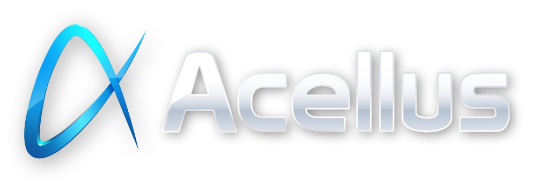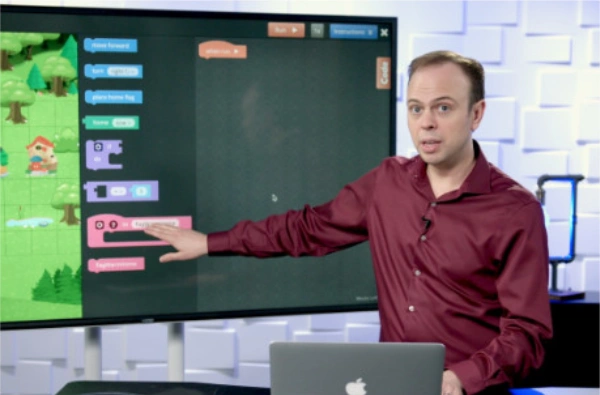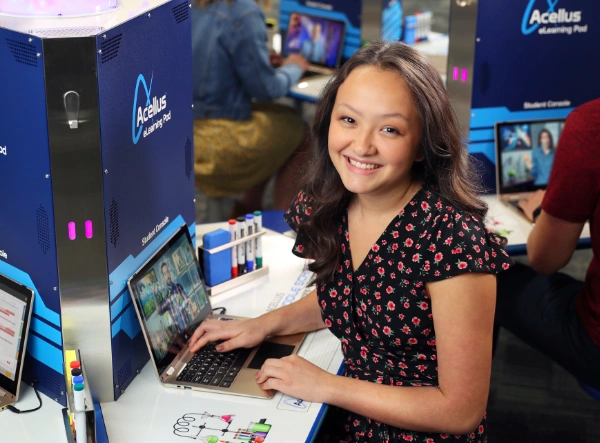DEPLOYING ACELLUS FOR
STEM Education
STEM-10: A Cohesive 10-Year Initiative Connecting Students to STEM Careers
A Cohesive 10-Year Initiative Connecting Students to STEM Careers
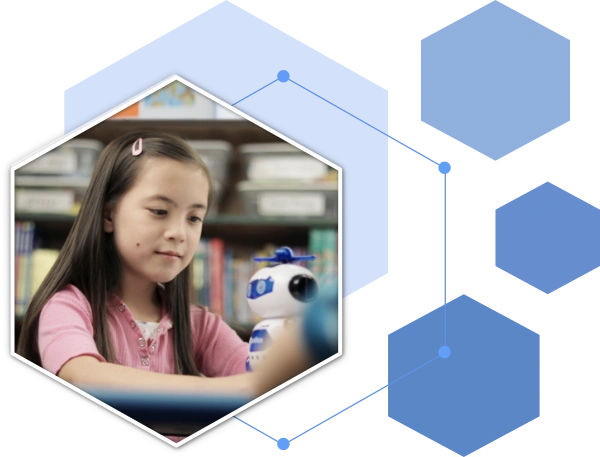
Acellus STEM-10 is a major initiative engineered to significantly increase the number of students prepared for high-tech careers right out of high school. STEM-10 is a cohesive 10-year program starting in elementary school.
The first 7 years of the program focus on STEM instruction, starting with coding fundamentals (usually in the 3rd grade) and gradually advancing in complexity each subsequent year as students expand their knowledge and hone their skills. In year 8, students are presented with the opportunity to delve into a specific STEM pathway that aligns with their individual interests.
Direct, Self-Contained Instruction
The Acellus coding instruction is self-contained and delivered right through the Acellus system, enabling schools to implement STEM-10 in classrooms where a STEM-trained teacher is not available. The coding courseware is video-based, and adaptive to the students individual needs, allowing schools to personalize the STEM instruction to the level and skill set of each learner.
STEM-1: Introduction to Coding
In the first year of STEM-10, students advance step-by-step through the fundamentals of coding.
The course begins by building a baseline understanding of coding concepts, after which students are introduced to Cellus Bot, a teaching robot which is equipped with lights, motor, and sensors, that students learn to control using block coding modules included as part of the course.
Students first learn how to control the robot in the most simplistic manner, but quickly learn more complex fuctions that increase in complexity as the course progresses.
STEM-1 Sample Lesson: Dancing Robot
STEM-2 Sample Lesson: Hide and Seek
STEM-2: JavaScript
In the second year of STEM-10, students are introduced to a sophisticated new dancing robot called AC-D2. Equipped with snazzy lights, ultrasound sensors, and multiple motors, AC-D2 comes ready to move. It can sway, twist, and dance around with approximately 10,000 possible step combinations giving it great style on the dance floor.
Students learn to program this more advanced robot through the Level 2 Acellus coding course, which teaches students the syntax needed to program in JavaScript. This allows students to engage in serious coding tasks that will control the robot’s personality and movements.
STEM-3: Electronics & Coding
Electronics is one of the foundational technologies enabling our modern world. This course delves into how electricity is used to make computers and robotics possible. Through this course, students gain a comprehensive understanding of crucial concepts such as voltage, current, resistance, and capacitance. They will also continue to hone their JavaScript skills acquired in the previous STEM course. Studies will culminate in combining the electronics and coding concepts in ways that show how they are used together to shape our real-world applications.
STEM-3 Sample Lesson: Completing a Circuit
Acellus STEM Robotics Lab
A Learning Environment Designed to Spark Creativity
The Acellus STEM Robotics Lab creates an environment tuned to give students a discover-and-create learning experience. Rather than only working through a simulated environment, Acellus STEM Labs provide students with an actual robot to program.
The specially designed STEM Learning pods include all the tools students need to be creative and productive. Each pod seats three students and includes touchscreen laptop computers, programmable robots, active learning stools, a whiteboard tabletop, and dry erase markers.
The Acellus STEM Lab utilizes cognitive instruction, a method of instruction that achieves student learning through the process of acquiring knowledge and understanding through thought, experience, and the senses.
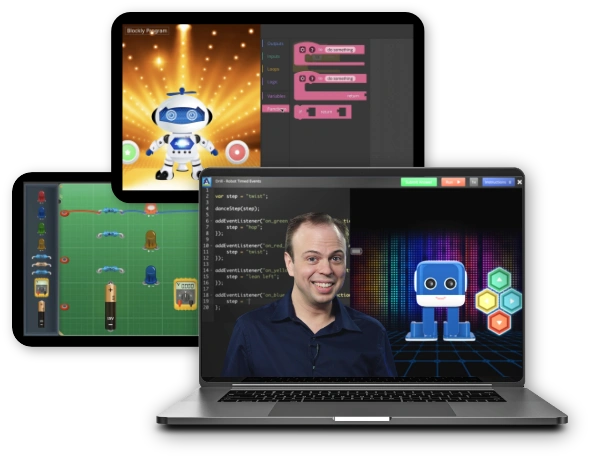
Acellus STEM for Special Education
Acellus is dedicated to supporting schools in implementing Acellus STEM Robotic Labs and STEM curriculum for students classified with special needs. Research has demonstrated that a greater proportion of students with special needs pursue careers in STEM compared to their peers. By integrating Acellus STEM Robotics Labs into special education settings, educators can effectively prepare students for success in college and equip them with the tools needed for a thriving STEM career.
Preparing Students with Special Needs to Transition into High-Demand STEM Careers
Careers in STEM, particularly computer science, has seen remarkable growth in recent years, and this trend is expected to continue into the next decade. According to the U.S. Bureau of Labor Statistics, the number of STEM jobs could reach 11 million by 2032, representing a 10.8% increase from 2022. This growth, coupled with a rising number of students in special education programs, highlights the critical need to prepare these individuals for successful transitions into STEM majors and careers.
The Acellus STEM-10 Program, provides an opportunity for students to embark on a path that propels them toward success in STEM-related fields.
e-School News Article
5 Reasons to Integrate STEM into Online Learning
by Dr. Roger Billings, Acellus Chairman
Students need STEM–and a strong STEM learning background will carry them from high school to a high-tech workforce. As more and more fields require technical knowledge, it is a good idea to equip our young learners with basic STEM skills early on…

Find out what it would cost to get Acellus for your school.
Acellus State Coordinators are available to provide you with more information on getting Acellus for your school.
